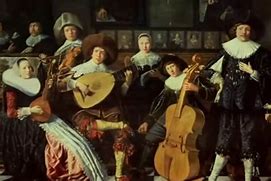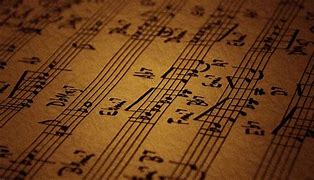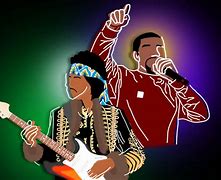Introduction
Music has been an integral part of human culture since time immemorial. It transcends boundaries, connects people, and expresses emotions in ways words alone cannot. From the rhythmic beats of ancient tribal rituals to the sophisticated symphonies of the modern era, the evolution of music is a fascinating journey that mirrors the development of civilization itself. In this article, we will explore the history of music from its origins in ancient civilizations to its transformation into the diverse and complex art form we know today. So, how did music evolve? How did it shape societies? Let’s dive in.
The Origins of Music
Music likely predates written history, with evidence suggesting its existence even in the prehistoric period. Early humans probably created music through natural sounds such as clapping, foot stomping, and vocalizations. Archaeological discoveries show that even ancient humans used primitive instruments such as flutes made from bone and drums made from animal skins.
In these early stages, music had a crucial role in social rituals, marking events like births, deaths, and seasonal changes. Early music was often vocal, accompanied by simple instruments that were easily accessible, like rocks or sticks. These early forms of music helped in group bonding and communication before the development of formal language.

Music in Ancient Civilizations
Music continued to evolve as human societies became more complex. Ancient civilizations such as Egypt, Mesopotamia, China, and Greece developed their own musical traditions, and many of these traditions still influence music today.
Ancient Egypt
In Ancient Egypt, music was deeply woven into religious ceremonies and royal courts. The Egyptians developed a range of instruments including harps, flutes, and percussion instruments. They also had specialized musicians for the royal courts and religious rituals. The music was often intended to invoke the gods and was believed to have mystical properties.
Mesopotamia
In Mesopotamia, music was also a significant part of religious worship. The Sumerians, for example, used lyres, drums, and wind instruments in their temples. The oldest known written musical notation comes from the ancient city of Ur in Mesopotamia, dating back to around 2000 BCE. This notation system laid the foundation for written music in future cultures.
Ancient China
In Ancient China, music was considered one of the pillars of education and social harmony. Chinese music theory emphasized the importance of sound and pitch, leading to the creation of a variety of string, wind, and percussion instruments. The Qin, a stringed instrument, is one of the oldest traditional instruments still in use today.
Ancient Greece
The Greeks made significant contributions to the development of Western music theory. They were the first to recognize the connection between music and mathematics, particularly through the concept of harmony. Ancient Greek music was based on the use of scales, and they developed the first known system of tuning. The famous philosopher Pythagoras discovered the mathematical ratios that form the basis for Western musical scales.
The Middle Ages: Music and Religion
As Christianity spread through Europe, music became an essential element of religious worship. The Gregorian Chant, named after Pope Gregory I, was one of the most important musical forms of the Middle Ages. This unaccompanied vocal music was used in church services and was designed to elevate the soul and connect the worshiper with the divine.
During this time, the development of musical notation allowed music to be preserved and transmitted across generations. The notation system initially used by the Catholic Church became the foundation for Western music notation as we know it today.
The Renaissance: Birth of Polyphony
The Renaissance period (14th to 17th centuries) saw a major shift in the way music was composed and performed. One of the most significant developments during this era was the emergence of polyphony, which involves multiple independent melodies being sung or played at the same time.
Composers such as Josquin des Prez and Palestrina advanced polyphonic techniques, creating rich and complex musical works. The Renaissance also saw the rise of secular music, with composers writing for courtly entertainment and the development of instrumental music.

The Baroque Period: Expression Through Music
The Baroque period (1600-1750) is known for its dramatic, expressive style. Composers like Johann Sebastian Bach, George Frideric Handel, and Antonio Vivaldi created intricate compositions that emphasized emotion, ornamentation, and grandeur.
During this period, the opera became a prominent art form, combining music, drama, and staging. The rise of orchestras and the development of new instruments, such as the violin, also had a major impact on the music of the Baroque era.
The Classical Period: Harmony and Balance
The Classical period (1750-1820) was characterized by clarity, balance, and structure. Composers like Wolfgang Amadeus Mozart, Ludwig van Beethoven, and Franz Joseph Haydn revolutionized music by creating symphonies, concertos, and chamber works that adhered to formal structures.
The Classical period saw the development of sonata form, a framework that continues to be used in music composition today. This era also saw the rise of the piano, which became a central instrument in both public and private performances.
The Romantic Period: Emotion and Individualism
The Romantic period (1820-1900) emphasized individual expression and the exploration of deep emotions. Composers like Franz Schubert, Johannes Brahms, and Pyotr Ilyich Tchaikovsky created music that was personal, dramatic, and filled with contrasts.
During this time, music became more diverse, incorporating elements of folk traditions, nationalistic themes, and heightened emotional intensity. The orchestra grew in size, and composers experimented with harmonies, orchestration, and form to create music that conveyed a wide range of emotions.
The Birth of Jazz: A Fusion of Cultures
In the late 19th and early 20th centuries, jazz emerged as a powerful new genre, particularly in the United States. Jazz blended African rhythms, blues, and European harmonies to create a vibrant and improvisational style of music. The genre quickly spread worldwide, with legendary figures like Louis Armstrong, Duke Ellington, and Charlie Parker defining its sound.
Jazz introduced the concept of improvisation to popular music, and its influence can still be heard in countless genres today. It was a cultural melting pot that brought together diverse musical traditions and revolutionized the way people thought about music.
The 20th Century: The Age of Innovation
The 20th century was marked by rapid innovation and transformation in the world of music. Technological advancements, such as the phonograph and radio, changed the way people consumed music, making it accessible to a global audience. This was also the era in which popular music genres such as rock ‘n’ roll, blues, R&B, and hip hop emerged.

The Rise of Rock and Roll
In the 1950s, rock and roll became a dominant genre, with artists like Elvis Presley, Chuck Berry, and Little Richard leading the charge. This energetic, rebellious style of music captured the spirit of the time and influenced generations of musicians.
The Evolution of Pop and Electronic Music
In the latter half of the 20th century, pop music became the most commercially successful genre. Artists like Michael Jackson, Madonna, and The Beatles became global superstars, shaping the cultural landscape. The rise of electronic music, with pioneers like Kraftwerk and Jean-Michel Jarre, also marked a major shift in the way music was created and produced.
The Digital Revolution: Music in the 21st Century
The advent of the internet and digital technology has transformed the music industry in the 21st century. Digital platforms like Spotify, YouTube, and Apple Music have made music more accessible than ever, allowing listeners to explore a wide variety of genres and artists.
At the same time, music production has become more democratized. Artists no longer need large record labels to distribute their music; they can produce and release their tracks independently using home recording equipment and digital distribution channels.
The Globalization of Music: A Fusion of Cultures
As technology continues to advance, music has become increasingly globalized. Genres like reggaeton, K-pop, and Afrobeats have gained international recognition, blending elements from different cultures and musical traditions. The internet has allowed artists from all over the world to collaborate and share their music, creating a truly global music scene.
Conclusion
From the earliest primitive instruments to the digital music revolution of the 21st century, the history of music is a story of innovation, cultural exchange, and emotional expression. Music has always been a reflection of the human experience, and as long as there are people to create and listen, music will continue to evolve and connect us in ways words alone cannot.
Meta Description:
Explore the history of music from its ancient roots to the diverse genres of the modern era. Discover how music has evolved and influenced cultures worldwide.
FAQs
1. How did music originate in ancient civilizations?
Music likely began as a form of communication and ritual. Early humans used vocal sounds and primitive instruments, such as drums and flutes, to create rhythms and melodies.
2. Who were the major composers during the Baroque period?
Some of the most famous Baroque composers include Johann Sebastian Bach, George Frideric Handel, and Antonio Vivaldi. They are known for their complex, dramatic compositions.
3. What is the significance of polyphony in music history?
Polyphony, which involves multiple independent melodies played or sung at the same time, became a major musical development during the Renaissance period. It allowed for more intricate and harmonious compositions.
4. How did jazz influence modern music?
Jazz introduced improvisation and syncopation into popular music. It also paved the way for various genres, such as blues, R&B, and rock, influencing artists worldwide.
5. How has technology changed the music industry?
Technology has revolutionized music by making it more accessible. The rise of digital platforms has allowed artists to reach global audiences, and music production has become more accessible to independent musicians.


